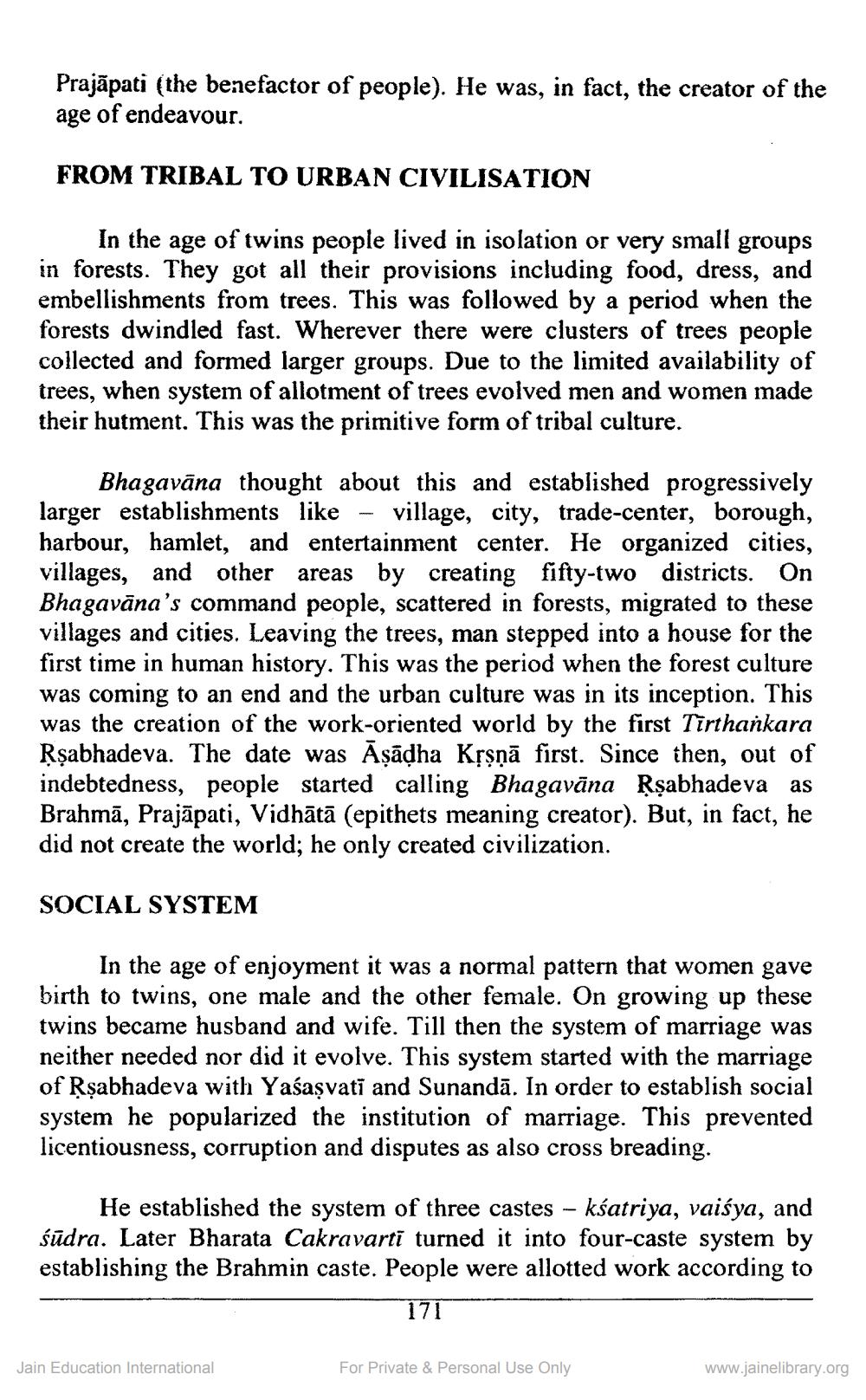________________
Prajāpati (the benefactor of people). He was, in fact, the creator of the age of endeavour.
FROM TRIBAL TO URBAN CIVILISATION
In the age of twins people lived in isolation or very small groups in forests. They got all their provisions including food, dress, and embellishments from trees. This was followed by a period when the forests dwindled fast. Wherever there were clusters of trees people collected and formed larger groups. Due to the limited availability of trees, when system of allotment of trees evolved men and women made their hutment. This was the primitive form of tribal culture.
Bhagavāna thought about this and established progressively larger establishments like - village, city, trade-center, borough, harbour, hamlet, and entertainment center. He organized cities, villages, and other areas by creating fifty-two districts. On Bhagavāna's command people, scattered in forests, migrated to these villages and cities. Leaving the trees, man stepped into a house for the first time in human history. This was the period when the forest culture was coming to an end and the urban culture was in its inception. This was the creation of the work-oriented world by the first Tirthankara Rşabhadeva. The date was Āsādha Kșşņā first. Since then, out of indebtedness, people started calling Bhagavāna Rşabhadeva as Brahmā, Prajāpati, Vidhātā (epithets meaning creator). But, in fact, he did not create the world; he only created civilization.
SOCIAL SYSTEM
In the age of enjoyment it was a normal pattern that women gave birth to twins, one male and the other female. On growing up these twins became husband and wife. Till then the system of marriage was neither needed nor did it evolve. This system started with the marriage of Rşabhadeva with Yaśaşvati and Sunandā. In order to establish social system he popularized the institution of marriage. This prevented licentiousness, corruption and disputes as also cross breading.
He established the system of three castes – ksatriya, vaisya, and śūdra. Later Bharata Cakravarti turned it into four-caste system by establishing the Brahmin caste. People were allotted work according to
171
Jain Education International
For Private & Personal Use Only
www.jainelibrary.org




